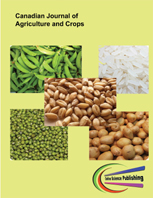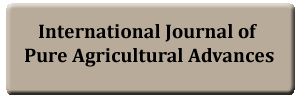Physicochemical Characterization of Compost Mixtures Enriched with Agroindustrial Waste
DOI:
https://doi.org/10.20448/803.3.1.33.41Keywords:
Agroindustrial waste, Molasses, Milk whey, Compost.Abstract
In order to counteract the abuse of agrochemicals, techniques agriculture has been implemented, including the use of organic fertilizers; such is the case of the use of compounds enriched with agroindustrial waste that allows generating an added value to these residues that contaminate the environment. The present research aimed to design and evaluate composites using agroindustrial residues. The experiment was developed with a duration of 60 days for which three treatments were designed, a control treatment (CC) a treatment with molasses (CM) and a treatment with whey milk (CMW); Each treatment was established with cow manure, lamb manure, mango peel, banana peel, leaf litter and peanut husk, however two of the treatments were enriched with 10 L of the corresponding agroindustrial waste. A physical-chemical characterization of the agroindustrial residues was performed, without forgetting the microbiological analysis according to the technique of plaque count of total coliforms. According to the evaluated treatments, the lowest loss of 1.6% of nitrogen (N) corresponding to the whey enriched beds (CMW) was reported, unlike the control treatment (CC) that reported large losses of this macronutrient, without. However, during the 60 days of evaluation, an increase in the levels of organic carbon and organic matter in mixes enriched with molasses (CM) was identified. In addition, this composite mixture was located in a thermophilic stage that allowed the elimination of pathogenic microorganisms with a concentration of 909 MPN/g of Escherichia coli, necessary to qualify the compost as a mixture of quality and useful in food crops.


